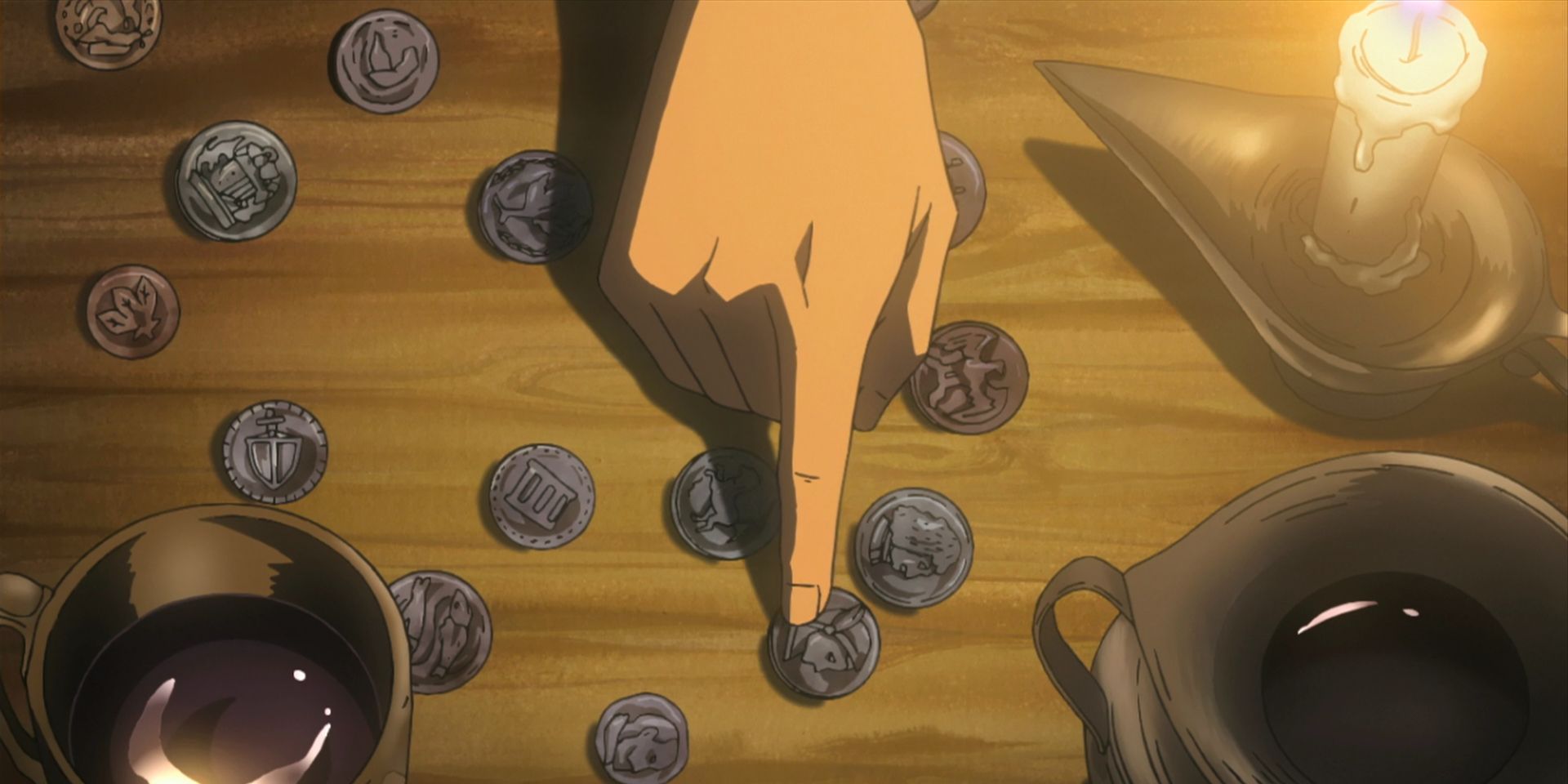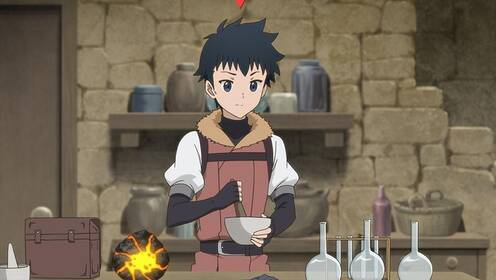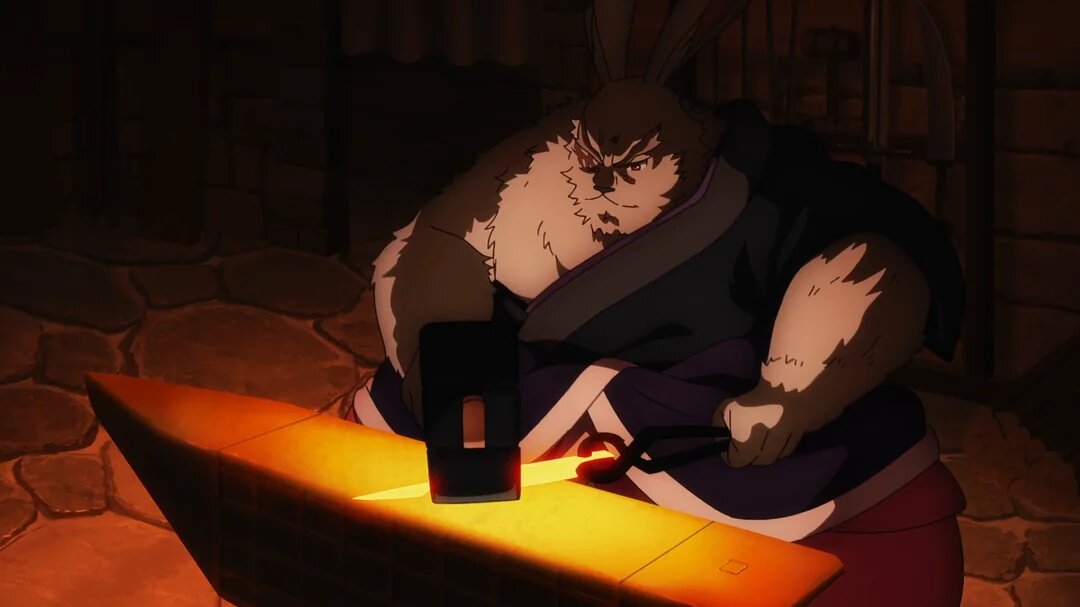Now that we’ve covered research for games both digital and physical, we can take that knowledge and apply it to a crafting mechanic for The Serket Hack. Unlike the last two posts which were mostly observational, I anticipate this one will be much more biased to my own personal preferences.
Crafting Lets You Get Stuff
The core concept of crafting is a method of item acquisition. You craft so you can have stuff. You take atomic elements and combine them into a useful object. This broadly overlaps with two major parts of the traditional rpg experience: shopping and loot.
As we saw in Dungeons & Dragons, crafting was primarily considered an alternate way to get magical items but with much more control over which loot you received. In games like Minecraft, everyday non-loot objects are craftable: i.e. you make a bucket so you can carry water with you. For TSH, I am much more interested in the latter category than the former.
If we create a robust crafting system for The Serket Hack, then where does that leave shopping? Simple: I’m going to shoot currency with a gun.
The settlements of humanity in TSH are scattered and isolated. Trade outside of the Imperial City has been stifled to the point such that bartering is extremely common. Individual villages will have unique currencies (flavored based on local elements), and obtaining it will indicate to people in town some measure of trust. This sets up an interaction where players first entering a town will have to trade or otherwise provide service before they can, for example, get a room at the inn. Establishing that ice break is an opportunity for crafting to fill, but it’s also an opening for anti-lore. Players have a reason to research what a town needs and is known for before they visit so they can arrive with an appropriate gift.
I like the idea of players having a purse full of shells, runestones, leaves, wood carvings, and more. The tokens in their inventory are a record of the places they’ve been. Currency also becomes a storytelling device: if someone tries to pay you in Imperial Scrip, that says something about them.

Crafting Is Player-Facing
Crafting should be something that players can engage in without having GM supervision. The rules of it should be laid out so that once players have received materials and ingredients during a session, they are able to make things as they see fit. This is one of the issues I have with systems like Beam Saber, which require a back-and-forth between GM and player to create objects. The process slows down games and distracts from the spotlight, even during downtime.
Speaking of downtime: if we extrapolate “player-facing” to its natural endpoint, the idea of a limited amount of time to craft is antithetical to my design goals. I want to avoid players having to ask how many crafts they can do per downtime or even be de-incentivized from going on adventures because they need more time to make stuff. The sole limitation on whether or not a player can craft something should be whether or not they have the materials to make it.

Crafting Is For System Sickos
What it says on the tin.
Humanity has evolved past the point of making stuff with an eight-step clock. I need mechanical spice in my games. I want nerds to look at a table and get a headache trying to figure out how to optimize the process. As we’ve seen with games like Final Fantasy XIV and the Atelier series, I’m not alone in the love of mechanically complex crafting systems.
However: the act of crafting shouldn’t be overly complex inherently. “Will my craft succeed or fail?” is not a particularly interesting question to me. The goal of my system is to excite people about possibilities: “What can I craft with these new ingredients?”. Complexity should serve to establish a degree of opacity such that players must spend time looking at charts and tables to discover what they can make.

How It Works
Okay. I’ve been rambling for a while now about the pillars of this crafting system, but I’ve been speaking in really abstract terms. What do all of my contrarian desires make when we put them together?
Elemental Structure
I’m borrowing from Atelier Ryza here: everything is made up of materials which have elemental values. Specifically, the traditional elements of Wuxing: Wood, Fire, Earth, Metal, and Water. An oak branch might be worth 1 Wood, whereas an oak log would be worth 2 Wood, and an ancient oak seed worth 3 Wood. A dragon scale might be worth 2 Metal and 2 Fire.
Things Are Made Of Stuff
Objects are able to be de-synthesized (to borrow a word from FFXIV) into materials as described above. A player that finds a shovel can break it down into:
- Iron Plate [2 Metal]
- Oak Rod [1 Wood]
- Iron Ingot [1 Metal]
Alchemy
What we’re doing here is definitely magic so it needs a magic name. I thought about calling it “Transmutation” but that’s not really the vibe, so I’m calling it “Alchemy” unless I think of something better.
Creating an object requires you to know the formula:
- Shovel: [1 Wood, 3 Metal], Capacity 3, Core n/a
Capacity is the primary restriction on crafting. It limits the amount of materials you can use during the process of creating the object. For example, if you had an Oak Rod and 3 Iron Ingots, you would not be able to create a Shovel because you could only use three out of your four materials. There are a few ways players overcome this restriction, but the easiest is simply to get better materials. Ingredients that are worth more elements allow players to create more things.
Core is a requirement for a specific material to be used in the process. For example, a Ruby Ring would require a Ruby [3 Earth] in addition to other materials to complete the alchemy.
The Sauce
Shovels are easy. Maybe shovels should be harder, but that’s something that will shake out in testing. Let’s say you’re trying to make a Hyper Dimensional Mythrite Breastplate: [2 Wood, 6 Fire, 12 Metal, 6 Water], Capacity 6, Core Mythrite Lodestone.
Step one: get the formula.
Step two: roll your portents.
When you begin the process of using alchemy to create an object, you roll 3d6 as portents. This informs the condition of the materials and changes aspects of the craft. You select one category even if the portents display multiple valid ones:
| Category: | Example Roll: | Change: |
| Ones | [1, 1, 3] | Add +1 Wood per 1 |
| Twos | [2, 2, 5] | Add +1 Fire per 2 |
| Threes | [3, 3, 3] | Add +1 Earth per 3 |
| Fours | [4, 1, 6] | Add +1 Metal per 4 |
| Fives | [5, 5, 3] | Add +1 Water per 5 |
| Sixes | [2, 6, 6] | Add +1 of any Element per 6 |
| Even Straight | [2, 4, 6] | Add one Capacity |
| Odd Straight | [1, 3, 5] | One Material is not consumed |
| Low Straight | [1, 2, 3] | Double the Elements from one Material |
| High Straight | [4, 5, 6] | Double the amount of one Element |
| Three of a Kind | [5, 5, 5] | Double the Capacity |
| Thirteen | [3, 4, 6] | No Materials are consumed |
| (Secret) Lunar | [4, 4, 5] | Soulbound |
(This is essentially the traditional dice game “Crag“.)
Let’s say you roll a [4, 5, 6] for a High Straight. This lets you double the amount of an element.
Step three: assign materials.
Assigned materials only count for a single type of element, even if the material can be used for more than one. After combing your inventory and borrowing from a party member, you use the following materials:
- Mythrite Lodestone [4 Earth, 4 Metal]
- Hardened Leather Straps [2 Wood]
- Steam Elemental Heart [3 Fire, 3 Water]
- Shotgun Barrel [3 Fire, 3 Metal]
- Iron Plate [2 Metal]
- Spirit Coral [3 Wood, 6 Water]
You double the amount of Metal, bringing you to 12 total Metal and fulfilling the requirements for the Hyper Dimensional Mythrite Breastplate.
Step four: alchemize!
Assuming you’ve met all the requirements, you simply craft the thing.
Edge Cases & Extras
The obvious question: what happens if someone begins a craft, rolls their portents, and does not have enough elements to complete it? Answer: nothing happens. However, once a portent is rolled for a given item, that portent stays true until that item is created. If a player finds themself unable to complete the craft, they write down the portent and save it until they’re able to complete the item. This does not prevent the player from crafting other items and rolling portents for them.
Portents have room to expand. At the very least, I want to establish rituals for players to influence the dice. For example: if the alchemy is performed during a full moon, you may reroll each die once. Burning incense made from sacred heartwood allows an extra dice to be added to the portent (though only three may be chosen). The main problem is that some of these lead to a dependence on the GM: i.e. asking for a full moon.
My other thought is to expand Alchemy into its own pseudo-class and allow players to unlock passive bonuses by accomplishing feats — in the same manner combat classes do. Learning from a legendary smith might give you a bonus to working with Metal, or establishing a bond with a Sylph could give you an extra capacity for adding Wood.
Hopefully I was able to reach a coherent point with my crafting ideas. I think some of the mechanics will gel when they can stand in front of a table full of formulae. It means a lot of design work on my end, but that should mean less weight on GM shoulders.
